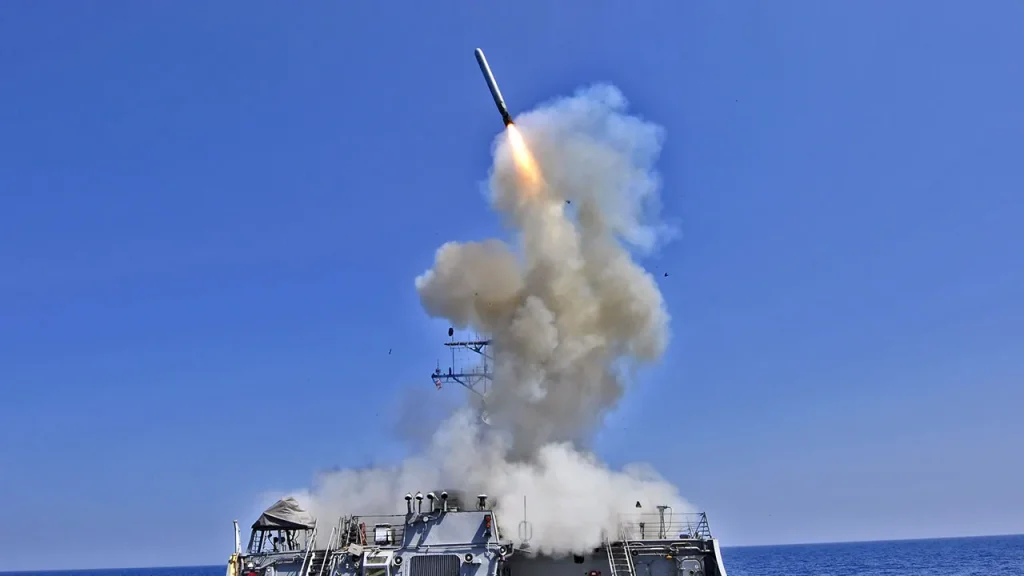Trump Signals Possible Tomahawk Missiles for Ukraine, Taking a Bold Stance on Russia
In a significant shift in America’s approach to supporting Ukraine, President Donald Trump has indicated he might send Tomahawk missiles to Ukraine if Russian President Vladimir Putin refuses to end the ongoing conflict. During a conversation with reporters aboard Air Force One on Sunday, Trump described the weapon as “incredible” and “very offensive,” suggesting a more assertive stance toward Russia than previously seen in his administration. This development comes amid continued Russian attacks on Ukrainian infrastructure and increasing calls from Kyiv for enhanced defensive capabilities.
Trump revealed he had spoken with Ukrainian President Volodymyr Zelenskyy earlier that day, during which Zelenskyy expressed Ukraine’s urgent need for additional weapons. While Trump emphasized that his administration would sell and send weapons to NATO allies—unlike what he characterized as the Biden administration’s approach of giving Ukraine “$350 billion”—he also stressed the importance of maintaining sufficient weaponry for America’s own defense. “We gave him nothing, but we gave them respect and some other things,” Trump stated, adding that Ukraine particularly needs Patriot missile systems and has expressed interest in Tomahawk missiles, which he described as “a step up” in terms of military support.
Before committing to sending Tomahawk missiles, Trump suggested he might first speak with Putin to gauge Russia’s reaction to such a move. “I don’t think so,” Trump said when asked if Russia would welcome this development, continuing, “I might speak to Russia about that, in all fairness. I told that to President Zelenskyy because Tomahawks are a new step of aggression.” Trump indicated he might tell Putin directly that “if this war is not going to get settled, I’m going to send them Tomahawks.” This approach demonstrates Trump’s preference for using potential military aid as leverage in diplomatic negotiations, asserting that “Russia does not need” the threat of Tomahawk missiles and emphasizing, “I want to see the war settled.”
For his part, Zelenskyy confirmed the conversation in a post on social media platform X, stating that they had discussed “all the aspects of the situation,” including Ukraine’s defense needs and efforts to strengthen its air defense, resilience, and long-range capabilities. The Ukrainian president also mentioned that they covered “many details” about the energy sector, though he did not provide specifics. “President Trump is well informed about everything that is happening,” Zelenskyy wrote, adding, “We agreed to continue our dialogue, and our teams are doing their preparations.” This communication suggests ongoing cooperation between the two leaders at a critical time for Ukraine’s defense against Russian aggression.
The discussions between Trump and Zelenskyy come at a particularly challenging moment, as Moscow continues its campaign of drone and missile strikes against Ukraine. Recent attacks wounded at least 20 people in Kyiv and caused widespread power outages, with a child killed in a separate Russian attack in the southeast. Russia has intensified its targeting of Ukraine’s power grid, particularly over the weekend, in what appears to be a deliberate strategy to cripple the country’s energy infrastructure before winter arrives. These tactics mirror Russia’s approach in previous years, aiming to maximize civilian hardship during the coldest months when energy needs are most critical.
Russia has expressed “extreme concern” over the possibility of the United States providing Ukraine with Tomahawk cruise missiles, suggesting that such a move would represent a significant escalation in Western support for Kyiv. Tomahawk missiles, with their long range and precision capabilities, would potentially allow Ukrainian forces to strike targets deep within Russian territory, changing the dynamics of the conflict. Trump’s willingness to consider providing these advanced weapons systems indicates a potentially more confrontational approach to Russia than previously anticipated, while simultaneously using the threat as a diplomatic tool to pressure Putin toward settlement talks. As winter approaches and the war continues with no immediate end in sight, the strategic calculus for both Ukraine and its supporters appears to be evolving toward considerations of more decisive military options.


